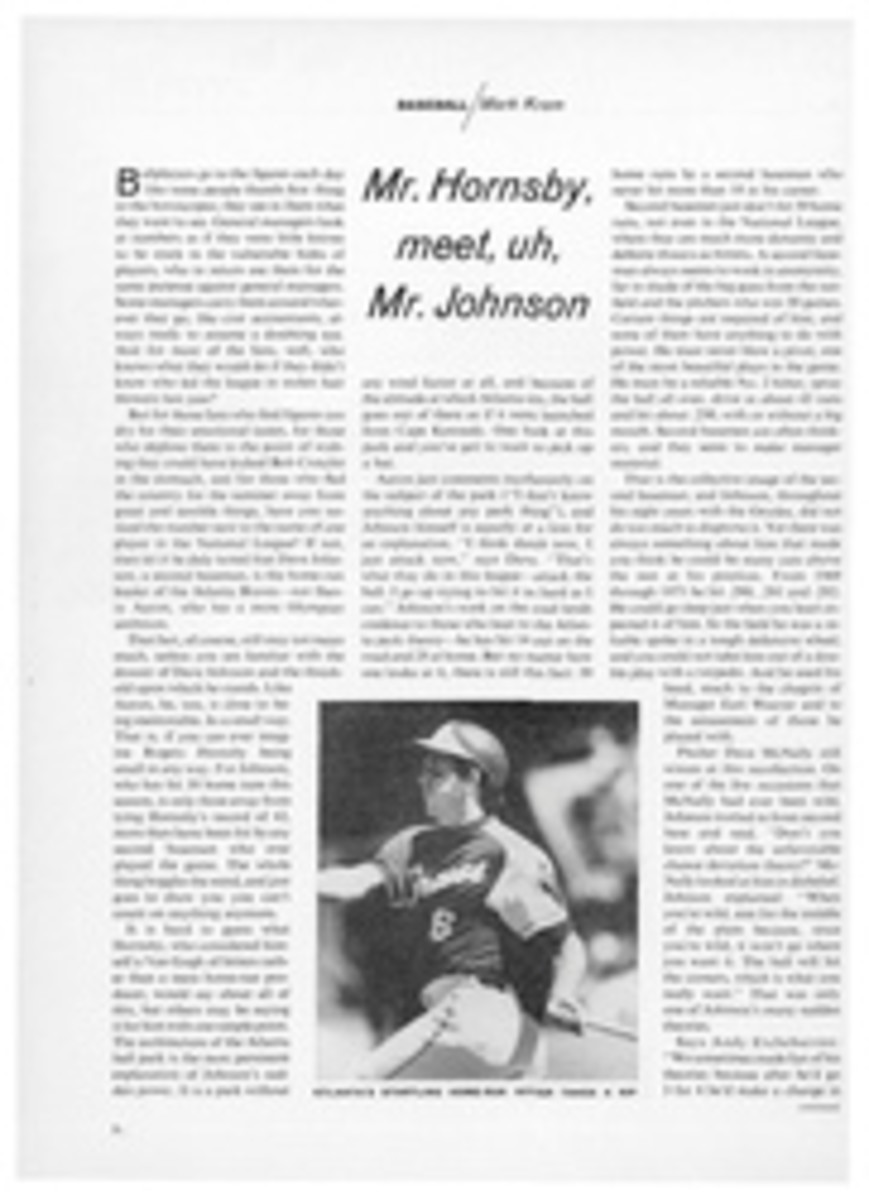
Secrets of a sumo wrestler, or how to get the other fellow by the 'mawashi'
Sumo is a medieval backwater of sport, and throughout the 2,000 years since its founding it has resisted penetration by foreigners. Enter Jesse Kuhaulua (his ring name is Takamiyama), a 360-pound Hawaiian, the first non-Japanese ever to win a major sumo tournament. Jesse is a bay window into the cloistered life of Japan's most venerated athletes. He is co-author with John Wheeler of Takamiyama—The World of Sumo (Kodansha International, Tokyo, New York and San Francisco, $10).
"There were many days I was genuinely afraid to go into the practice area," Jesse says of his initiation. Older wrestlers "often hit me on the back or legs with bamboo sticks.... They would even spit at us sometimes or throw salt into our mouths. Since they were our seniors there was nothing we could do." This was the kawaigatte (which comes from a Japanese verb meaning to treat with affection), calculated to infuriate the young trainee, "to fan the flames of his fighting spirit." The beginners were then made to politely bathe, feed and massage their tormentors, running errands for them, combing their hair. The only way to freedom from these indignities was to fight up the rankings until they themselves were privileged to use the next batch of beginners as body servants.
Jesse reached sekitori (top division) in 1967. He is all in favor of the system: "Kawaigatte...the stress on manners, etiquette, is meant to build the unique spirit that alone can produce good wrestlers and good men. Since I became a sekitori I don't have a reputation for always being a nice guy." A glance at his picture on the book jacket confirms his point. A very tough baby.
The publishers call it an "autobiography" but the book is also an introduction to sumo, though close attention is sometimes needed to keep up with the terminology. Japanese words, after one definition, are used extensively in sentences like this: "His opponent, who has failed with his initial thrusting attack but feels himself suddenly free of his attacker's hold, will grab his mawashi in a last-ditch utchari attempt." This turns out to mean that he couldn't push him out so he pulls on his belt to flip him over as they both fly into the box seats. Co-author Wheeler leaves Kuhaulua for pages at a time to explore sumo's misty origins, detailing its techniques, its judging and its involved finances. Jesse becomes a device for humanizing an encyclopedia, and Turner Givens' photos are as tantalizing as the text. Is there anything in the liquid eyes of the young Jesse that foreshadows the bull on the jacket? This should become a standard work, but it is a pity Wheeler's scholarship is not matched by skill at characterization.

